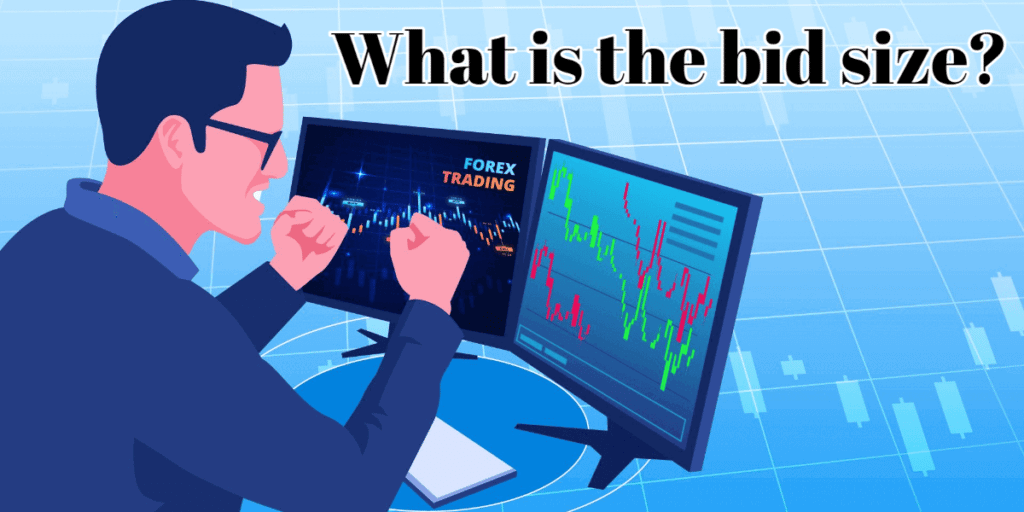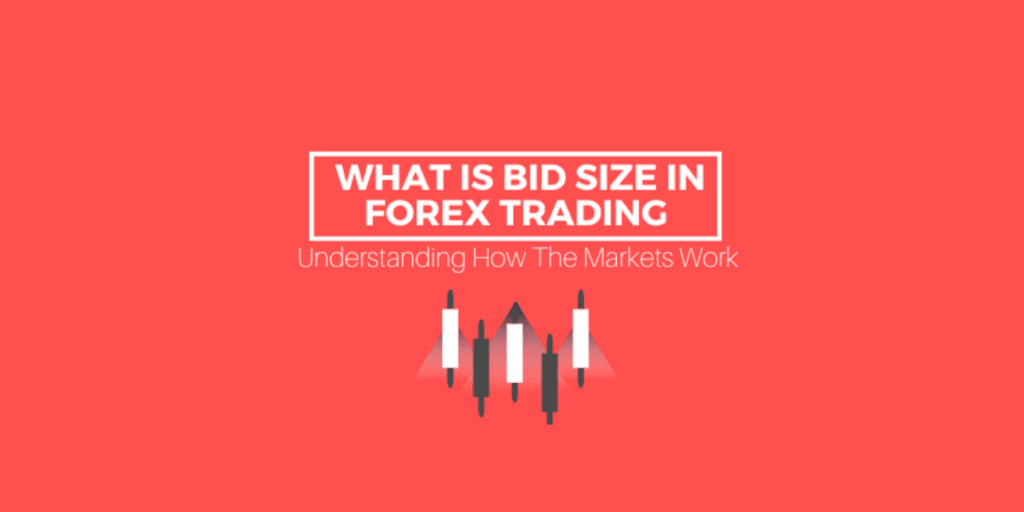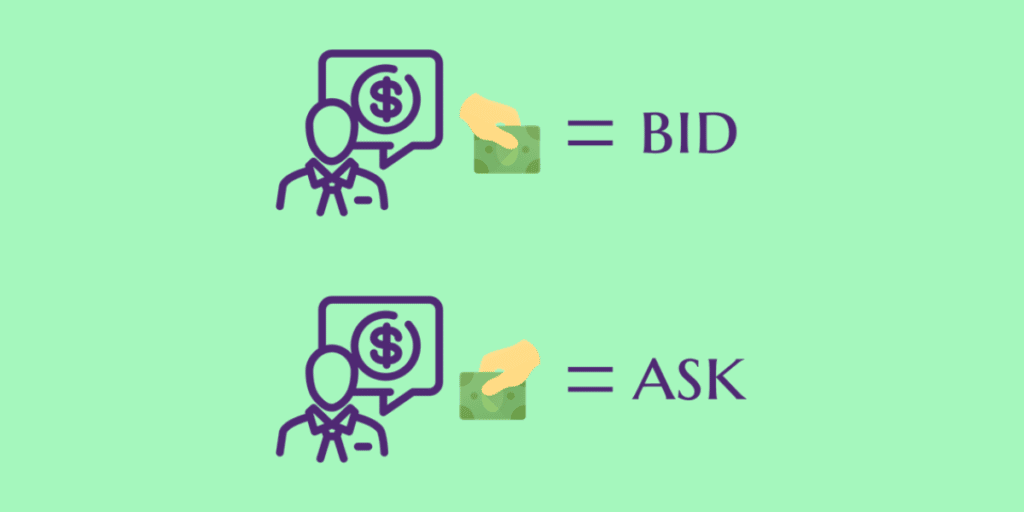Bid/size vs. ask/size in Forex

Bid/size vs. ask/size in Forex – get the crucial information.
Have you ever wondered why knowing the bid/size vs. ask/size difference is crucial? Why do traders need to understand its true meaning and difference if they’re eager to be successful in their trading business?
The majority of people understand that the concept of trading is a high-stakes, fast-paced activity that needs proper risk management. However, only some are aware of the bid/size vs. ask/size comparison in Forex trading.
To become a wealthy and successful Forex trader shortly, it’s crucial to understand what bid size vs. ask size means and how they can affect any trading strategy you wish to pursue. It’s inevitable for professional traders to understand all essentialities that may help them achieve their trading goals more efficiently and effectively.
Let’s get to know all about the bid/size vs. ask/size that may convert any average trader into an advanced one, starting with the bid size. In order to comprehend the bid/size vs. ask/size the best, let’s get to know what each of them represents in the first place. Only in that way you’ll understand how they are compared.
What is the bid size?

The bid size refers to the security quantity investors wish to buy at a specified bid price. It refers to the number of shares that certain investors want to purchase at the best possible bid price for the majority of investors who observe level 1 quotes on their trading screens.
Level 1 quotes represent a type of trading screen that, in real-time, has the national best bid and offer or the best bid-offer-volume quotes. It supplies traders with the basic information that’s useful to investors. Nonetheless, some professional traders prefer an order book and other info that include higher-level quotes.
Bid size in Forex trading – explained.
First of all, it’s crucial to understand that the bid and ask prices are utilized in the Forex market for trading currencies. In case a trader wants to sell a particular currency pair, they’re setting the ask price much lower than the bid price. However, their currency will still be sold at the bid price.
In Forex trading, the bid size represents the amount that a trader is willing to buy a currency pair, i.e., what investors are willing to pay for their potential security. The bid size is always higher than the ask size since the institutional trader services predetermine the bid size.
The bid size is based on the trading volume of the dealers who determine it. Remember that a dealer’s bid size normally indicates the market’s range.
How to calculate the bid size?

The bid size is calculated in two ways. The first way is understanding that a forex trading bid-ask spread is always quoted in pips, where one pip equals one point of the particular currency pair.
Keep in mind that a different pip value could have two identical currencies. For instance, 1 USD equals 0.000125 Bitcoin, whereas one euro equals 0.00015 Bitcoin. The second way for calculating the bid size is when a trader divides the bid price by the ask price, multiplying the resulting number by the lot size.
In this case, we can utilize the example form above, where the bid size would be the following:
1.23456/1.23457*1000 = 1,234. Regarding the ask size, it’s calculated in a similar way to the bid size, only using the ask price instead of the bid price, but we’ll get to that later in the article.
Understanding how the bid size function
Typically, bid sizes are shown in board lots, which are standardized numbers of shares. In this case, bid sizes’ board lots represent 100 shares each. In case a level 1 quote displays $50 as a bid price and five as a bid size, we can conclude that, in order to buy 500 shares, the best offer from an investor eager to buy the security is $50 per share.
Thus, a particular investor who possesses that stock could easily sell up to 500 shares, where each share costs $50. As you may have guessed, the bid size is the opposite of the ask size. Let’s get to know more about the ask size so we can make a bid/size vs. ask/size comparison for you!
What is the ask size?

The ask size is the quantity of certain security that the market maker offers to sell at the ask price. In this case, the market maker refers to either an individual or a firm that quotes two-sided markets in a certain security, in that way providing asks and bids with the market size of each.
It’s the opposite of the bid size, which is the number of contracts or shares people buy at a bid price. Remember, the higher the ask size, the more supply is available for people who wish to sell.
Once a buyer looks to buy a certain security, they’re able to go for the ask price and acquire the ask size amount at that given price. If a particular buyer is eager to get more security at the additional price than the current ask size, they’ll need to pay a higher price to the next seller.
How to understand the ask size better?

Before getting to know more about the bid/size vs. ask/size, let’s see an example of the ask size that will ease your understanding of it. Usually, the ask size is shown in round lots, where every lot refers to 100 shares. Thus, the ask size of four is 400 shares.
The main reason why ask sizes are crucial to know and are important is that they contemplate the liquidity and demand of a single security. The ask size will be shown by level 1 quotations only for the best possible ask price. On the other hand, level 2 quotations will show market information on numerous layers of both ask and bid sizes and prices.
The best example of the ask size
Bids and spreads could easily be understood with the proper examples. In this example of the ask size, suppose we’ve got a stock quote for X Corp. with a $15.30 (25) bid and $15.50 (10) ask. The bid price represents the highest bid entered to buy the X stock, while the ask price represents the lowest one for the same X stock.
Remember that the bid and ask price numbers indicate the exact number of shares at their respective prices that are pending trade. Here we’ve got a $15.30 limit bid price, with 2,500 shares offered for purchase in aggregation. All bid orders entered at the bid price are what aggregation means.
In case an investor buys shares in X, they’ll pay $15.50. But, if he liquidated these shares subsequently, these shares would be sold for $15.30. The difference represents a loss to him.
What should you know regarding bid/size vs. ask/size?

Regarding the bid/size vs. ask/size, i.e., bids and asks, we can tell that it refers to the total amount of securities that could be bid (sold) or ask (bought) at the actual market prices. So, the bid size is the number of securities investors are willing to buy at the current price.
On the other hand, the ask size refers to the exact number of securities investors want to sell at that price. The higher the ask size, in this case, the more supply is available for people to sell. It’s also crucial to remember that the bid price represents the price at which a trader is quoting.
The ask quote is the amount of currency a buyer wishes to purchase. When it comes to the ask price refers to the maximum amount of currency that one buyer is willing to pay. What determines the bid and ask price is the liquidity of the market.
Since the Forex market is extremely volatile and liquid, it’s no wonder that understanding the bid/size vs. ask/size concept and how to use it in the best possible way is crucial for the overall success of one enthusiastic Forex trader or investor.
Why should you consider investing in the Forex market in general?
Generally speaking, Forex, or the foreign exchange market, refers to the biggest financial market, with 6.6 trillion dollars of daily turnover. It’s extremely dynamic and profitable if a trader is experienced and informed enough to use the best possible strategies, brokerage firms, and know-how techniques.
Investing in the Forex market nowadays could be very beneficial if we take into account forecasts for the market. According to reports, from 2021 to 2026, the reinsurance market share will probably grow by $328.62 billion. The market’s growth momentum is expected to accelerate at 10% of CAGR.
In the last decade, the Forex market has grown exponentially. The future of the entire Forex industry is very bright. According to experienced professional Forex traders and analysts, before 2020, the market had grown by another 33%.
Remember that Forex traders, generally speaking, are able to make you richer if you’re an extremely skilled currency trader or a hedge fund with a lot of money. However, the average retail trader should expect a rocky highway to potential penury if he needs to be more informed and skilled!
The post Bid/size vs. ask/size in Forex appeared first on FinanceBrokerage.
0 Response to "Bid/size vs. ask/size in Forex"
Post a Comment